So, you have decided that you want to get a ham radio license.
Whether you are already a hobbyist or someone who just started learning about ham radio, this article will help you prepare to ace that licensing exam.
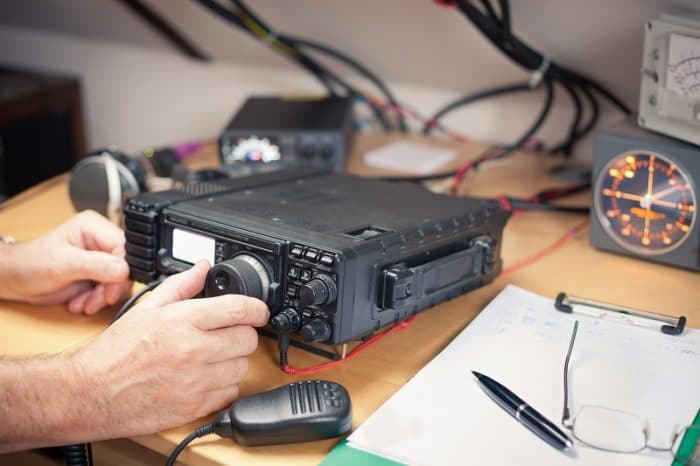
For the benefit of our beginner readers, it might be best to start off with a quick background about ham radio.
Ham radio, also known as amateur radio, allows a person to communicate with others locally, nationally, or internationally without using cellular phones or the internet. Instead, they make use of allocated frequencies to send and receive messages.
Today’s communication tools are smarter and faster to operate, but the infrastructure behind it has become complicated as well. Ham radios are simpler alternatives.
Who Uses Ham Radio?

Did you know that there are over 3 million registered ham operators in the world? Despite the continuous improvement of the internet and smartphones, the ham radio community is still very active.
Hams are people that come from all walks of life – teachers, doctors, dentists, carpenters, students, and more. They use the radio either for fun, to have a technical hobby, for emergency preparedness, or to help other people during calamities.
In fact, during the 9/11, ham operators helped victims communicate with their families since the cellular and internet connections were not available. Being a licensed ham operator can be a lifeline in times of need.
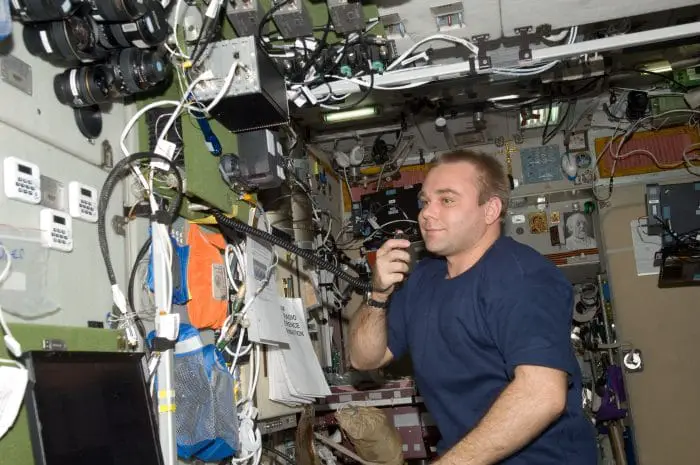
But aside from that, ham radios can also be used for fun. There are clubs who run radio sports contests where members try to contact as many people as they can within a specified time.
It is a good avenue to meet and get to know people from all over the world – even those from outer space! Yes, you can communicate with astronauts using a ham radio. Cool, right?
Why do you Need a Ham Radio License?
Before you get to enjoy those perks, let me tell you now that yes, you need to get a license first. There are some people who choose to skip this part, and I would advise you not to do the same.
“I don’t need no stinkin’ license”
I hear so many people say “I don’t need a license after SHTF” or “No one is going to be checking licenses after SHTF”.
Ok. It’s probably true that no one is going to be coming around checking for valid amateur radio licenses.
This is true, but good luck figuring out a HAM radio, without the internet to help you. It’s not intuitive, there really is a lot of things you need to understand.
How are you going to practice operating ham radio without a license? Is your master plan to hold off on practicing any survival skills until after SHTF?This is why you need your license and need to practice before it’s to late!
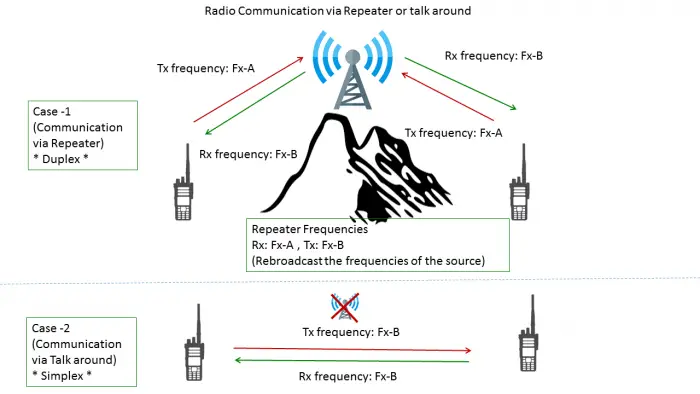
Ham radios use airwaves to transmit and receive messages. These same airwaves are being used by airplanes, police radios, and other emergency response equipment.
Naturally, these airwaves are and must be regulated. Without such regulation, there’s a great potential for misuse and interference with an allocation that is meant for emergencies.
The licensing body is the Federal Communications Commission (FCC). They have opened up licensing for hobbyists because they acknowledge the backup support they can get, most especially during emergencies.
A new pool of experts can provide help when needed. There are a lot of success stories where hobbyists assisted in saving lives during disasters like earthquakes and typhoons.
If you want to be a licensed ham operator, you need to pass an exam to prove that you have an understanding of rules, regulations, standard procedures, and technical aspects of operating an amateur radio.

In exchange, the FCC grants you more frequency so you can communicate at a larger scale than those who are not licensed.
Types of License
There are three license classes: Technician, General, and Amateur Extra. A beginner should take the Technician license exam first and upgrade to General and Amateur Extra in the future.
In the U.S., a license is valid for 10 years and anyone is eligible to take the exam except for representatives of foreign governments.
What’s the difference between the three license classes? Transmit frequency privileges. A Technician license grants a limited frequency privilege than a General or Amateur Extra license.
Let’s get to know each license class further.
1. Technician License
The Technician license is an entry-level license for beginners. It grants access to all ham radio frequencies above 30 megahertz. This means operators with a Technician license are able to talk locally – within their city or town.
The exam is in a multiple-choice format and is composed of 35 items from a pool of 400 questions. To pass, an examinee must answer 74% (26) of the questions correctly.
2. General License
The General license is the secondary level exam. All exam passers gain access to worldwide communications. License-holders are also allowed to communicate with the emergency crew and to use emergency frequencies when local lines are down.
Similar to the Technician License exam, you will also need to answer a 35-item multiple-choice test drawn from a pool of 400 questions. The passing rate is also 74% or 26 items answered correctly.
3. Amateur Extra License
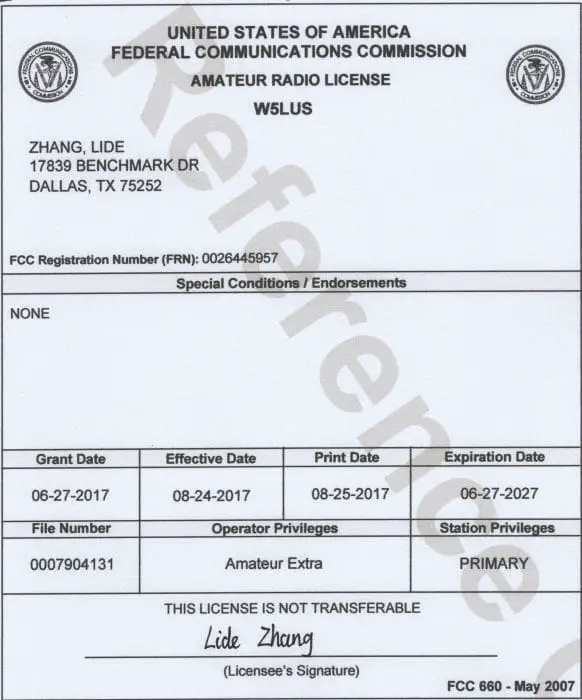
The Amateur Extra license is the tertiary level license. It’s the most advanced and most difficult to obtain.
Examinees will answer a 50-item multiple-choice exam from a pool of 500 questions. The passing rate for this exam is 74% which means you need to answer 37 questions correctly.
This license will give you access to all available U.S. ham radio operating privileges on all modes and all bands. It means you can communicate at the local, national, and international levels.
The License Exam
As mentioned in the previous section, a pool of questions is prepared per exam type. From that pool, 35 or 50 questions are selected and given to examinees as part of their license test.
Members of the National Conference of Volunteer Examiner Coordinators (NCVEC) formulate these question pools. Once available, they release the pools to the public. From there, study materials are developed and individual examinees may also access the questions for study and practice.
The NCVEC updates the question pools every four (4) years. As of writing, the last revision was made on July 1, 2018. The current version is valid until June 30, 2022.
Where to take the license exam

Volunteers from NVCEC facilitate the examinations for ham radio licenses. They also set the exam fee, which is around $15. The number of fees can vary in each testing center, so it’s best to call them and ask before the exam date.
In a month, there can be multiple exams and events in each club. Some of them allow walk-in examinees, while others require pre-registration. To see a testing center near you and to check their exam schedules, you may check this page.
Requirements
Here are the items you will need to bring with you during the exam date:
- One legal ID with a photo. Can be any of the following:
- State Driver’s License
- Military or Law Enforcement Officer Photo ID card
- State Photo ID card
- Government-issued Passport
- Student School Photo ID card
If no ID photo is available, bring any two (2) of the following:
- Non-photo State ID card
- Social security card
- Birth certificate (must have the appropriate seal)
- School ID card
- Employer’s wage statement or Minor’s work permit
- School or Public Library card
- Utility bill, bank statement, or any business correspondence that is named to you
- Social Security Number (SSN) or your FCC issued Federal Registration Number (FRN)
- Two pieces Number 2 pencils, an eraser, and a pen
- A calculator is allowed only if the history and formula are erased
- If applicable, bring a photocopy of your existing Amateur Radio licenses
- Money to pay for the exam fee
Preparation
Now that you know where to take the license exam and what to bring, it’s time to prepare. Make sure that you treat the preparation stage seriously. You need to dedicate time and effort to studying to pass.
Here are some study tips to help you prepare:
1. Access Study Materials

There are a lot of available study materials online. It’s nearly impossible to list down all sites offering exam guides and practice tests.
It would also be of great help if you start getting involved in your local ham radio club while you prepare for the exam. They sometimes conduct classes to help exam takers. And on top of that, you can ask for tips and review resources from other members as well.
Class Room Training
Some people learn better in a classroom environment, or don’t trust themselves to dig in and learn on their own. That’s fine. There are many classes organized by American Radio Relay League (ARRL). You can find a class in your area on their website: Find an Amateur Radio License Class
Self-Guided Training
If you are one, who can study on your own, you can buy books (or eBooks) dedicated to HAM Radio License and Study Guides.
Hamstudy.org is another option. They help you keep track of your progress and provide you with a pool of 500 questions that may include the actual 35 items you will answer on the exam day.
Once you feel like you have a good grasp there are many places where you can take practice tests, that use the same questions, that you’ll see on the Exam.
Tidbit of knowledge: Remember that wavelength = 300 / frequency in MHz (Trust me, you’ll need to know this to answer some of the questions, and it comes in handy later on while HAM’ing)
Practice Tests Sites:
- https://www.qrz.com/hamtest/ (My favorite and the one, I am using right now, for my General License Practice)
- https://aa9pw.com/
- https://www.eham.net/exams/
- https://hamexam.org
- https://www.arrl.org/exam-practice (provides information and additional resources, like links to flash cards)
2. Set a fixed exam date

If you don’t set a deadline for taking the test, you are most likely to slack off from studying and keep postponing it.
There are several exam dates available each month, so it can be very tempting to reschedule. Pick a schedule in the next 2-4 weeks so you can really challenge yourself and focus on studying.
3. Set a study schedule
Decide how many hours you will spend each day studying and stick with it. One hour per day is enough as long as you focus and stay away from distractions.
Following a daily study schedule will also help you avoid cramming. Don’t wait for the last 2 days before your exam date to start studying. This license exam is very technical and you would want a few weeks to really process and understand the concepts.

4. Read and Understand
Now that you have your study materials and schedule ready, it’s time to focus and study. Make sure you understand the topics well. Don’t worry about not having any previous knowledge of any of the concepts.
There are so many ham radio operators who have totally different professions and backgrounds. Make use of the practice tests to gauge your understanding. Writing down your learnings also help with retaining information.
5. Don’t memorize
Lastly, don’t memorize. Brainless memorization is easy and might help you pass the exam.
But once you are finally a licensed ham operator, you would be totally clueless. You wouldn’t know how to use your radio, so you’d be back to square one.
My Tactic to pass the exam
Once you’ve registered you free account on QRZ.com, head to the practice tests (Resources > Practice Amateur Radio Exams).
Click the green plus sign beside “2014 Technician Exam Practice Test -or- study a specific sub-category“. The image below shows the wrong expand, expand the most recent version of the exam you are taking!
This allows you to take a “practice test” for each subcategory (these are the real exam questions). I took each sub-category one at a time, until I could answer every question correctly, then I’d move on to the next subcategory.
It may take you a few weeks, but once you can answer all the questions take the full practice exam.
Wisdom from Others
It may behoove you to find a local Amateur Radio Club. This is a group of people who are experienced HAM operators and will welcome you with open arms to their club. They will share their knowledge with you, answer any questions you may have and can help prepare for your Exam. Many of them will also help you figure out how to get on the air and work these fancy radios too.
Many of these radio clubs offer classes for their members or to get new members. They will likely be the same people who are administering the ham exams in your area.
I can’t recommend this highly enough. My club meets once a month in person, but every Tuesday we have a “Net”, which is a meeting via Radio.
Find a Club in your Area (ARRL)
Taking your HAM Exam (hey, that rhymes)
Once you’re kicking butt on those practice tests (I know it won’t take you long, because you are AWESOME!), it’s time to find a testing location in your area.
Find an Amateur Radio License Exam Session
What should you bring to an Exam?
Chant the mantra “wavelength = 300 / frequency in MHz“!
That’s all there is to getting your HAM license. It’s easy, you can study in your spare time, and you get some great communication abilities!
I’ve heard all the excuses from people who think they don’t need to get their Ham Radio License. Now see why they are wrong!
What’s Next?
After you pass the exam, what’s next?
Passing the exam is crucial, but things don’t end with getting a license. In fact, the fun is just getting started!
What you get when you pass your HAM license Exam
- A cool call sign
- A license good for 10 years
- Privileges: All VHF/UHF Amateur bands (frequencies above 30 MHz).
- Limited operations in certain HF bands.
Here are your next steps after you become a licensed ham radio operator:
Buy a Radio
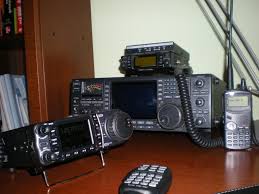
This is it. You can finally buy a radio and apply everything you know to start communicating with other operators.
For your first radio, you don’t have to spend much as you are only starting out. You can get a decent radio for $50. Aside from the radio, you might also need to buy other accessories like an antenna. In total, your initial cost can sum up to $100.
There are several brands and models available, so it would really help if you do your research before buying. If you are unsure, get inputs from other members of your local ham radio club. They can give you suggestions about what and where to buy.
Know and apply the radio wave rules
You have most likely learned about these rules already while reviewing for the exam. However, it is very different when you are finally out there.

In order to fit in the ham radio community, make sure that you abide by these rules. Other hams expect you to comply with the behavioral expectations and operating procedures they also follow.
Some of these rules are no swearing and no communications with hidden meanings. You can visit the FCC website to refresh your memory.
A better option is again to maximize your connections with other members of your local ham club. Talk to them on your radio and observe how a typical conversation would usually start and progress.
Finding the right gear
I like my radio, but I’ll take a crappy ham radio and a good antenna over a great radio and a poor antenna any day. The antenna is the true key. There are hundreds of books on antennas and antenna theory.
Maybe OpSec is important to you, or you might live in an area with an HOA or other restrictions against amateur radio antennas.
I live in one of those very areas and I turned to a book, Stealth Amateur Radio: Operate From Anywhere, to help me work around those issues.
My HOA and neighbors have no idea that I not only have a ham radio antenna, but I have multiple stealth antennas. It’s amazing where you can use and hide an end-fed antenna!
Practice
Cliché as it may sound, but practice makes perfect!
Don’t worry, you are not expected to be an expert overnight. So don’t feel intimidated or afraid to start or join conversations in the air. Just remember to always exhibit proper behavior and follow the rules.
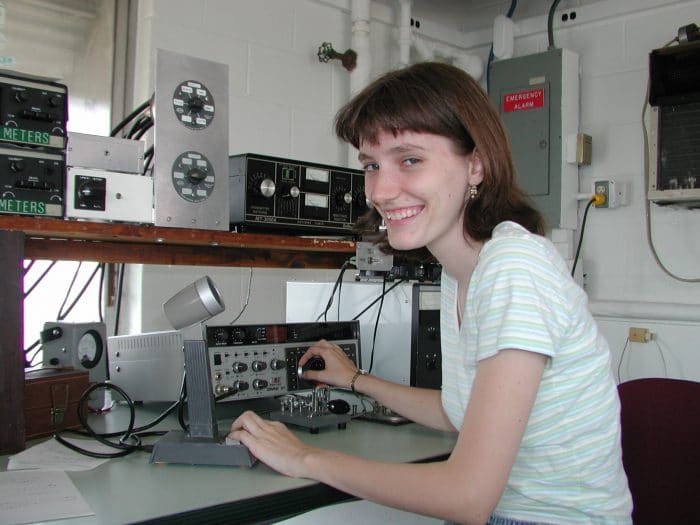
You need to start working a radio now. I guarantee you that just because you can pick up a microphone and push a button this doesn’t mean that you will ever make contact with anyone.
The only way to assure that you can make contact is practice, research and working with other experienced ham operators. It takes years to fine tune those skills and your gear to know the how and why of establishing communications.
Operating a ham radio can be difficult at first. You will have to familiarize yourself with different frequencies and find the best way you can connect with others. Continue to practice and of course, don’t forget to enjoy it!
Conclusion
Being a ham radio operator is very interesting and fun. This is why despite advances in other technology, the community keeps getting bigger and bigger.
Day by day, more people like you find resources online to understand how ham radio works and how they can learn to use one. It is very technical, yes. But with ample time dedicated to studying and practicing, you will learn the ropes in no time.
Getting a license is required. But as you have read earlier, it’s not that difficult after all. Decide which license class you want to have, look for a testing center and a schedule, and prepare. Online resources are widely available to help you. Refer to the study tips shared earlier so you can ace that test.
And when you finally get your license, go out, learn, and enjoy the perks of being a licensed ham operator.

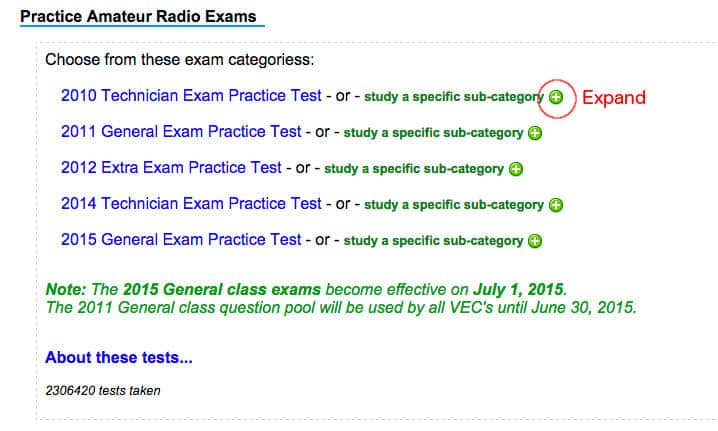

Thanks for a great article that is right-on. I’ve been a ham for 58 years and counting. I’d also like to make the case for CW (“Morse” code) operation. It may be a bit much for a lot of folks, but it can get through when nothing else can, even with very low powered transmitters (QRP). I have a little 5 Watt CW rig that can run from a set of AA cells for days and, when conditions are right, can communicate half way around the world. One advantage of CW is that most civilians don’t “speak” CW so it’s more secure.
Great info. Seems there are a lot of pitfalls to Ham radio. I don’t know anyone who has a Ham setup, not sure what I could possibly get out of using one. I’m sorry but I truly don’t understand why you want to do this.
Sounds like a hamm. Operator that thinks only they can use a radio.. if it’s a true emergency man made or not the FCC. (Yeah. The same people that gives out Ham license. .) States that anyone can transmit on Ham bands to help or request help for themselves or others. No license required. Now if you Hams choose not to help in a time of need. So be it. But I think any true Ham would. .
Quick…..calculate the length and construct an efficient wire antenna for 7.2 MHz in under 20 minutes when you have no access to the internet. Quick…..calculate what you can run from your 2 kw generator. Quick….calculate how long it will take for your solar cell to charge that battery. Quick….solder a PL-259 connector to RG-213 coax.
Quick….predict what band of frequencies you would use to communicate with someone 500 miles away and at what time of day. Quick……connect a resonant counterpoise to eliminate RF feedback. Shall I go on?
For the OP’s edification and the consideration of all others regarding the contrarians:
“…. I guarantee you that just because you can pick up a microphone and push a button this doesn’t mean that you will ever make contact with anyone…”
“…You spin the dial and home in on a voice. You push the transmit button and start shouting into the microphone. The voice on the other end keeps on talking.
Did he hear you? Is he ignoring you? What is going on?”
“…Even when you do things right, sometimes the sun and atmosphere don’t cooperate. If this happens, do you have enough experience to know if it’s the conditions that are failing or if it’s your gear that is failing?”
“…Unless you’ve worked your gear and know how it behaves on each band, you are severely reducing your chances of post-SHTF contact…”
“…
The only way to assure that you can make contact is practice, research and working with other experienced ham operators. It takes years to fine tune those skills and your gear to know the how and why of establishing communications…”
Contrary opinions smashed. And I’m not (yet) even a licensed ham.
Cheers 😘